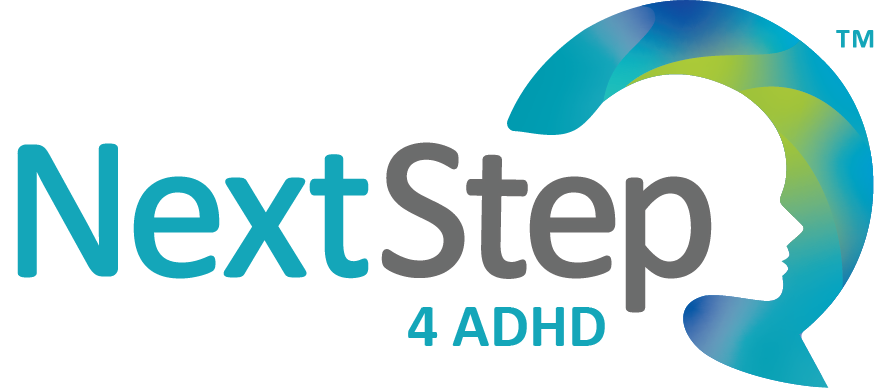
10 Study Tips for Children and Teens with ADHD
Whether your children are returning to in-person learning, e-learning, homeschooling, or a hybrid combination, there’s one thing that remains constant: homework. And study tips for ADHD can make all the difference for children and teens with ADHD.
In this article, we’ll cover 10 study tips for ADHD to make your child’s study time and homework time more productive — and more peaceful.
1. Create a “Study Only” Space
Distractions are one of the biggest road blocks when it comes to homework. Toys, TV, and even siblings who want to play can hinder study time. Children with ADHD are more likely to be distracted by their surroundings. The key is to create a “study only” space to help limit distractions. Trying to study in the family room while a sibling is playing or watching TV can be a big temptation.
Instead, create a comfortable place where your child can work with few distractions. Use this as a quiet place to work far away from noise and movement. Your child can clear his or her mind and focus on the tasks at hand.
Study spaces can include a quiet living room, the dining room table, or even the den (as long as the TV is off!).
Don’t do homework in the bedroom. The bedroom is a place for sleep and relaxation — not school work and stress.
Study Tip
2. Make a Study/Homework Schedule
Most children thrive with consistency. And for children with ADHD, it’s even more essential to have a consistent routine. Adding a dedicated study/homework time to your child’s after school schedule helps to start his or her focus. Set a time each day for your child to study, whether he’s e-learning, in-person learning, or homeschooling. This is one of the best study tips for ADHD!
3. Add Breaks to Your Schedule
ADHD can make it hard to focus, especially if your child is studying a subject that’s not-so-interesting to him. Breaks are a must to help maintain focus and avoid burnout. Add a break time and encourage your child to eat a snack or even go for a quick walk with you. This quick little break allows the mind reset! Bonus: if you choose to move around for the break, it will help burn off extra energy.
4. Fuel Up
We just covered the importance of adding a break to a long study session. Now we’re going to discuss the importance of starting the study session already fueled up and ready to go. If your child is hungry, he’s less likely to have a good study session. Healthy, nutrient-dense snacks are the best brain fuel.
Choose healthy foods that won’t crash his or her blood sugar. Certified Health Coach Pam Valdes suggests, “A combo of protein and complex carb (fiber-rich) snacks fuel energy and help stabilize blood sugar levels. For this reason, fruit and nut combinations work really well, such as apple & peanut butter, grapes & pecans, orange & almonds, pear & walnuts.”
5. Organize the Homework Station
Study tip #5 is all about organization. When you create a homework station for your child, organization is key to his or her success. Organize school supplies with:
- Colored folders or binders
- Colored notebooks or dividers
- Colorful labels
- Pencil case or pencil/pen caddy
However you decide to organize the station, it’s important that everything has a proper place. When everything — whether that’s a pencil or a notebook — has a place, your child spends more time studying and less time looking for lost pencils or books. This includes having a spot to hang up your child’s backpack.
6. Encourage and Support Your Child
A positive, supportive environment is a crucial ingredient to your child’s study area. Encourage your child to always try his or her best, and this is one study tip that can go far. When your child feels encouraged and supported, he’s more likely to see study time as a positive thing. If your child struggles, it’s okay to offer age appropriate help. Encourage your child look at challenges in a positive light to keep him or her motivated and develop a growth mindset.
Here are eight phrases that you can use to inspire and encourage your child:
- I can see you’re really trying!
- Keep on trying!
- You almost got it!
- I can see you tried hard.
- I appreciate your hard work on this project.
- How do you feel about that?
- I’m glad you enjoy learning!
- I’ll bet you knew you could do it!
If your child is struggling, don’t hesitate to stay in contact with your child’s teacher. When you know what’s going on in the classroom, it’s easy to spot red flags when they arise.
7. Understand Your Child’s Learning Style
Did you know that there are several different learning styles? Auditory, visual, or even kinesthetic — they are all valid and common ways of learning. Change studying habits to fit his or her learning style. For example, if your child is a kinesthetic learner, you can encourage the use of models or physical touch. You might also encourage your child to write down the facts he is trying to memorize. Use a finger to physically touch the items he is counting. According to Houghton College, movement can also help increase focus and attention while studying. This includes:
- Chewing gum
- Tapping a pencil
- Pacing (perhaps while you orally quiz your child on their test materials)
On the other hand, a visual learner may do better reading his or her own notes from class rather than an oral review.
The bottom line: Every child learns differently. Studying in a way that works for him or her can help improve both understanding and retention.
8. Know When It’s Time to End a Study Session
Children with ADHD can become easily frustrated or struggle to manage emotions. Encourage your child to keep going, but don’t push your child too much. If he or she has hit his or her limit, it’s okay to end a study session.
Praise your child after he or she finishes his or her homework or completes a study session, but remember to praise progress and effort.
9. Teach Your Child New Study Skills
Take each study session to the next level by teaching your child new study skills. A few examples of study skills include: mnemonic devices, effective reading, practicing concentration techniques, and efficient note-taking.
If your child is e-learning, there may be an adjustment as he or she learns to take notes via online classes. Be sure your child has plenty of notebooks, highlighters, and other tools for good note-taking.
10. Need More Than Just Study Tips for ADHD? Get Help If Your Child Needs It
Are you searching for actionable strategies to help your child with ADHD study better? In addition to practicing these study tips and strategies, your child may benefit from professional care. Here at Next Step 4 ADHD, we take multidisciplinary and holistic approach to your child’s ADHD treatment. Dr. Kristi Briscoe is a board-certified pediatrician specializing in effective medication management, parent coaching, and proven strategies to motivate and encourage children with ADHD.
We also offer coaching and therapy. You can see our multidisciplinary team of compassionate and expert providers here.
To make an appointment, call us at 502-907-5908. You can also request an appointment here.
Learn More
ADHD, Christmas, and Bedtime Routines! Oh My!
Bedtime battles are tricky enough for a child with ADHD, but the added excitement of Christmas can make bedtime even harder.
However, with a little preparation, you can create a peaceful — and Christmasy — bedtime routine for your child.
1. Exercise Is a Must
Exercise? As part of a bedtime routine? Believe it or not, exercise (or any physical activity) during the day helps you sleep better at night. According to Johns Hopkins Medicine, exercise during the day helps you fall asleep faster — and sleep better.
However, make sure your exercise isn’t right before bed as that can actually keep your child more awake. The goal is to get exercise logged in the morning or early afternoon.
Here are some holiday-inspired ways to stay active during the day:
- Go for a walk outside and see if your child can spot any signs of reindeer or elves
- Head to an ice skating rink
- Go skiing or cross-country skiing
- Build a snowman (if you have snow where you live)
You can even have a dance party in your home. Blast the Christmas carol remixed and dance, dance, dance!
2. Stick with Your Normal Bedtime
Children with ADHD thrive with structure and routine, and bedtime is no exception. If your child’s bedtime is usually 8 p.m., then keep that bedtime on Christmas Eve too.
However, you can add a festive touch to his or her normal routine.
- Adding a holiday-scented bubble bath to his or her bath
- Playing classical Christmas tunes during the wind-down period
- Singing Christmas carols instead of lullabies
3. Reading Christmas Books at Bedtime

Is reading to your child part of his or her bedtime routine? Reading to your child improves their language skills, teaches empathy, improves their vocabulary, but — most importantly — it’s a cozy time to bond with your child.
On Christmas Eve, read holiday-themed books to your child to help him unwind and soak up the lessons and stories about Christmas? Whether you read The Nutcracker, The Night Before Christmas, or The Polar Express, reading Christmas stories is sure to be a favorite holiday tradition.
4. Skip the Cookies, But Keep the Milk
Does your child leave out a plate of delicious Christmas cookies for Santa? While Santa might love the cookies, a sugary cookie isn’t the ideal bedtime snack for a child. You don’t have to skip the milk though. In fact, a warm glass of milk might even help your child fall asleep!
According to research, milk promotes restful sleep because it’s rich in melatonin and tryptophan. These are two sleep-inducing amino acids. For a special Christmas treat, sprinkle a little bit of cinnamon on top of the milk. Just be sure to avoid cinnamon-sugar.
5. Avoid Blue Light
Blue lights — the kind of light that your phone, tablet, or TV emits — can interfere with sleep. That’s because blue lights stimulate your circadian rhythm and tell your body to wake up. Warm-colored lights, on the other hand, are ideal for creating a cozy, soothing atmosphere right before bed. You might even notice that your phone or tablet has a night mode, which changes your screen from blue light to a warm, orange color.
Avoid blue lights for 1-2 hours before bed. Cozy up around the fireplace and read some Christmas stories!
More Sleep Hygiene Tips
You can read more about sleep tips in these articles:
What is your favorite Christmas Eve bedtime tradition?
Learn More
Does Your Child Have ADHD? Here Are 4 Surprising ADHD Symtpoms in Kids
Attention deficit hyperactivity disorder — most often referred to simply as ADHD — is a mental health condition characterized by a combination of inattention, hyperactivity, and impulsiveness. ADHD affects over 9% of American children, according to the Centers for Disease Control and Prevention — that’s roughly 6 million children. About 4 million of those children are between the ages of 6 and 11.
ADHD affects more boys than girls (12.9% versus 5.6%), and difficulty paying attention in school is a prominent symptom, but it’s not the only symptom of ADHD in kids. [1] The condition may affect children in many different ways, which may make it difficult for parents to spot the signs of ADHD, especially in younger children.
Undiagnosed and untreated ADHD can negatively affect your child’s quality of life, especially his or her school performance. That’s why our health care professionals at NextStep 4 ADHD recommend you visit us as soon as you spot the signs or symptoms of ADHD in your child.
Continue reading to learn more about the common symptoms of ADHD in children — and how we can help.
What is ADHD?
ADHD is a neurodevelopmental disorder that affects your child’s ability to focus and control impulses. [2] ADHD is not a lack of willpower to focus on the task at hand; instead, most experts believe the development of ADHD may be influenced by a child’s genes, the presence of toxins in his or her environment, brain injuries as well as subtle nuances in the hardwiring of his or her brain. [3]
Common Symptoms of ADHD in Kids
Children with ADHD are known for fidgeting or demonstrating disruptive behavior in school, but these are just two signs of ADHD. ADHD symptoms all fall under three categories:
- Inattention: These symptoms are related to the inability to maintain focus on a specific task.
- Hyperactivity: These symptoms are characterized by excess movements.
- Impulsivity: These are hasty actions that are performed without forethought.
Below is a sample of common symptoms that may affect children with ADHD:
- Becoming easily distracted during tasks, including school work
- Skipping the fine details, especially in the directions for homework or school projects
- Difficulty maintaining focus when speaking with others or holding conversations with teachers; inability to repeat back what you just said
- Self-focused behaviors such as interrupting the teacher
- Inability to wait for his or her turn in line or while playing a game
- Emotional symptoms, including increased outbursts (that are not age-appropriate) or increased temper tantrums
- Inability to sit still, including wiggling, fidgeting
- Difficulty playing quietly
- Increased careless mistakes on homework or schoolwork, not related to laziness
- Disorganization, including a messy desk at home or school
- Forgetfulness, including misplacing homework or favorite toys
4 Surprising Symptoms of ADHD in Kids
In addition to the above symptoms, ADHD can present itself in more surprising ways, symptoms that may — at first — seem unrelated to ADHD. These include bedwetting and daytime wetting, time blindness, and meltdowns.
Bedwetting and daytime accidents
While it’s normal for a child to have an occasional accident, daytime accidents are 4.7 times higher in children with ADHD. [4]
Time blindness
Time blindness is more than just poor management of time. This can manifest in many ways. A child may seem surprised and upset when it’s time to leave the park, even after a 5-minute warning. Time blindness can also affect a child’s ability to finish tests during the allotted time at school. It’s not that your child is ignoring you; he or she may not just perceive the passage of time in the same way as a neurotypical student.
Meltdowns
Unlike a temper tantrum, a meltdown doesn’t seem to cease if a child gets what he was asking for. A meltdown is how your child reacts to feeling overwhelmed. Sensory overload can even trigger a flight-or-fight response, which leads to yelling, uncontrollable crying, and even lashing out towards you or others. It can be very difficult to calm down a child in this state.
Poor social skills
Untreated ADHD can have profound effects on a child’s school and social life. Because untreated ADHD can make it difficult for a child to read social cues, he or she may struggle to produce quality work and form meaningful relationships with classmates.
When to Worry about ADHD Symptoms in Kids
Daydreaming and even fidgeting can be normal experiences for kids, but if your child regularly experiences these symptoms — at home and school — it may be beneficial to schedule an evaluation for your child.
Remember, ADHD is treatable!
Holistic Treatment Options for Children with ADHD
If you notice any of these symptoms of ADHD in your children, don’t hesitate to reach out to the experienced team of psychiatrists, pediatricians, psychologists, therapists, coaches and healthcare professionals at Next Step 4 ADHD. Working with a coach or therapist can help things like time management, reducing the frequency of meltdowns, and improving social skills.
We treat ADHD with a holistic, 5-tier approach and provide:
- Assessment
- Education
- Coaching
- Support
- Medication, if needed
Regardless of what age your child is, treatment can help provide the relief your child needs.
Questions? We’re Just a Call or Click Away
At NextStep 4 ADHD, we’re happy to provide comprehensive care for ADHD — and you don’t have to wait weeks for an appointment. If you’re struggling with the symptoms of ADHD, visit one of our convenient Kentucky offices in Louisville and Lexington. Call the location of your choice, or send us a message to request more information.
You can also request an appointment easily here.
References:
- What Is ADHD?, www.psychiatry.org/patients-families/adhd/what-is-adhd.
- “Data and Statistics About ADHD.” Centers for Disease Control and Prevention, Centers for Disease Control and Prevention, 15 Oct. 2019.
- “Attention-Deficit/Hyperactivity Disorder.” National Institute of Mental Health, U.S. Department of Health and Human Services.
- Tajima-Pozo, Kazuhiro, et al. “Treating Enuresis in a Patient with ADHD: Application of a Novel Behavioural Modification Therapy.” BMJ Case Reports, BMJ Publishing Group, 10 June 2014.

